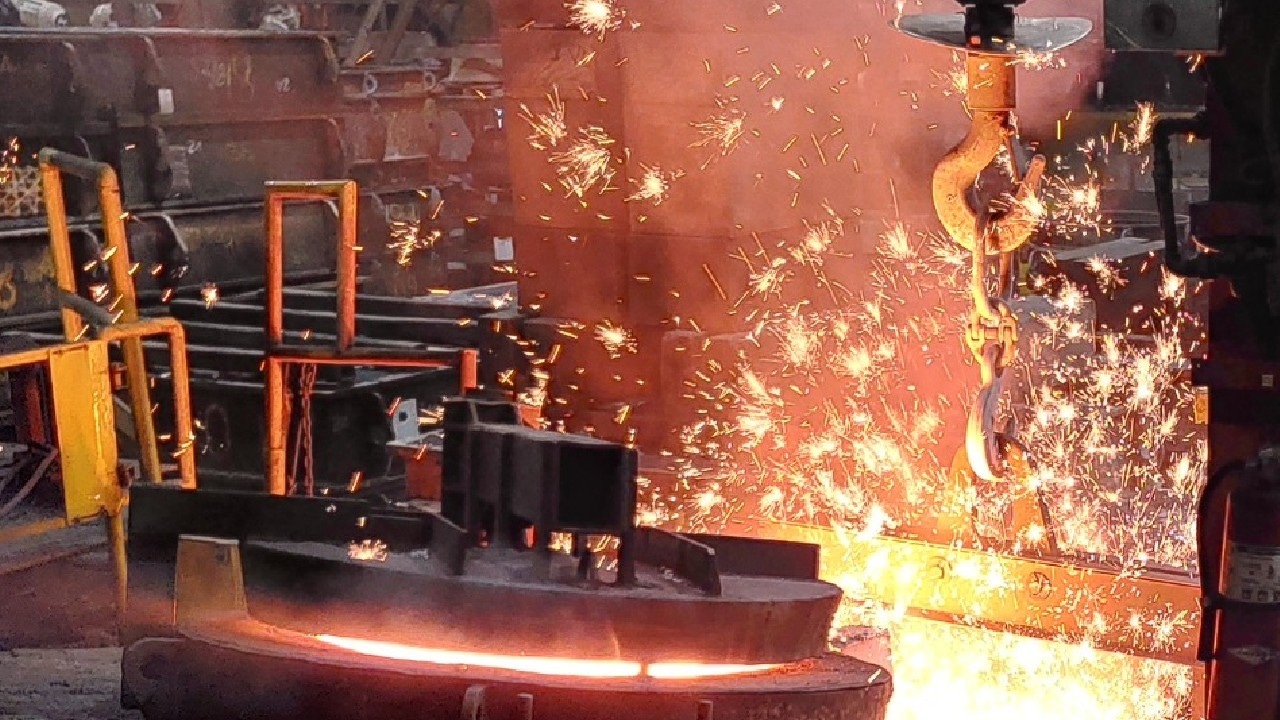St. Paul iron foundry has 30 days to address lead, air pollution problems
St. Paul iron foundry has 30 days to address lead, air pollution problems KSTP


St. Paul Iron Foundry Given 30 Days to Address Lead and Air Pollution Problems

St. Paul iron foundry has 30 days to address lead, air pollution problems
An iron foundry in St. Paul now has 30 days to remediate lead and air violations after new data showed the foundry is continuing to pollute the air.
This week, the Minnesota Pollution Control Agency (MPCA) issued an order for the Northern Iron and Machine Foundry in the Payne-Phalen neighborhood. The order detailed new information on lead and air pollution and required the foundry to amend the issue within 30 days, according to the MPCA.
The order comes after the MPCA fined the foundry $41,500 in October 2023 for 15 years of air quality violations, which the agency says the foundry never addressed.
Concerns for Sustainable Development Goals (SDGs)
- SDG 3: Good Health and Well-being – The pollution from the foundry poses a potential risk to the health of the children living in the area.
- SDG 11: Sustainable Cities and Communities – The presence of a foundry in a residential neighborhood raises questions about the safety and livability of the community.
- SDG 12: Responsible Consumption and Production – The foundry’s emissions of lead and particulate matter exceed national air quality standards, highlighting the need for improved environmental controls.
“We need to find out what’s happening to the children living in the area,” says Patricia Enstad, who lives nearby. “Is it safe to have a foundry in a residential neighborhood?”
“Look, we’re concerned. We want to know what’s going on,” says Rebecca Nelson, the board president of the Payne-Phalen Community Council. “When you’re breathing in things that are poison, that aren’t good for you, it affects your health systems.”
A spokesperson for the MPCA said the agency received new air emission modeling in February, which shows the foundry is emitting lead and particulate matter at levels “above national ambient air quality standards.”
“The MPCA has been working with the new owners of Northern Iron to address these likely exceedances and is requiring the company to reduce its emissions of lead and particulate matter to meet air quality standards within 30 days. In addition, the agency has installed neighborhood air monitors to measure actual lead and particulate matter in the air.
The MPCA will host a community meeting in May to provide the neighborhood with more updates.”
The Minnesota Pollution Control Agency
In a statement, Northern Iron and Machine said it “is committed to working with MPCA and the entire community through this process.”
“Our foundry provides high-quality, U.S.-made products that also support good-paying, including union, jobs. We also understand and respect the responsibility of being a responsive and accountable part of this important part of St. Paul.
“Our team has been working to address concerns about emissions since we purchased this important business only a short time ago. This also includes making plans for significant investments to upgrade the facility’s environmental controls based on the very new data our company and the MPCA are working with.
“We believe this foundry can continue to be a valued contributor to the economic vitality of St. Paul and be a leader for the environment as part of our company’s commitment to the environment and the communities where our businesses operate.”
Northern Iron and Machine
Lawton Standard, a Wisconsin company that owns multiple foundries across the country, bought Northern Iron in August 2022.
“It means we could be breathing stuff we shouldn’t be breathing,” says Ramona Banks, who’s lived in the neighborhood for nearly three decades while raising two children. “Nobody can ever tell you what level is safe, you can’t. There’s no such thing. The lead shouldn’t be there, you shouldn’t be breathing it.”
“We just want accountability. We just want to know what they’re going to do about it, going forward to alleviate these problems,” Nelson says. “Will they be shutting down production then, or will they be fixing the emissions that are coming out, and who are they going to be accountable to?”
SDGs, Targets, and Indicators Analysis
1. Which SDGs are addressed or connected to the issues highlighted in the article?
- SDG 3: Good Health and Well-being
- SDG 11: Sustainable Cities and Communities
- SDG 12: Responsible Consumption and Production
- SDG 13: Climate Action
The article discusses the issue of lead and air pollution caused by an iron foundry in St. Paul. This directly relates to SDG 3, which focuses on ensuring good health and well-being for all. The pollution from the foundry can have negative health impacts on the residents living nearby.
The issue also connects to SDG 11, which aims to create sustainable cities and communities. The presence of a foundry in a residential neighborhood raises concerns about the safety and livability of the community.
Additionally, SDG 12 is relevant as it focuses on responsible consumption and production. The article mentions the need for the foundry to address emissions and upgrade its environmental controls, indicating a need for more sustainable production practices.
Lastly, SDG 13, which addresses climate action, is connected to the issue of air pollution caused by the foundry. The emissions of lead and particulate matter contribute to air pollution and can have adverse effects on the climate.
2. What specific targets under those SDGs can be identified based on the article’s content?
- Target 3.9: By 2030, substantially reduce the number of deaths and illnesses from hazardous chemicals and air, water, and soil pollution and contamination.
- Target 11.6: By 2030, reduce the adverse per capita environmental impact of cities, including by paying special attention to air quality and municipal and other waste management.
- Target 12.4: By 2020, achieve the environmentally sound management of chemicals and all wastes throughout their life cycle, in accordance with agreed international frameworks, and significantly reduce their release to air, water, and soil to minimize their adverse impacts on human health and the environment.
- Target 13.2: Integrate climate change measures into national policies, strategies, and planning.
Based on the article’s content, the specific targets that can be identified are:
– Target 3.9 aims to reduce deaths and illnesses caused by air pollution and hazardous chemicals. The lead and air pollution violations from the foundry contribute to this target.
– Target 11.6 focuses on reducing the adverse environmental impact of cities, including air quality. The presence of the foundry in a residential neighborhood raises concerns about air quality.
– Target 12.4 aims to achieve environmentally sound management of chemicals and wastes. The article mentions the need for the foundry to address emissions and upgrade its environmental controls, aligning with this target.
– Target 13.2 emphasizes integrating climate change measures into national policies. The air pollution caused by the foundry contributes to climate change and aligns with this target.
3. Are there any indicators mentioned or implied in the article that can be used to measure progress towards the identified targets?
Yes, there are indicators mentioned or implied in the article that can be used to measure progress towards the identified targets. These indicators include:
– Number of deaths and illnesses related to air pollution and hazardous chemicals: This indicator can measure progress towards Target 3.9.
– Air quality index or levels of pollutants in the neighborhood: This indicator can measure progress towards Target 11.6.
– Emissions of lead and particulate matter from the foundry: This indicator can measure progress towards Target 12.4.
– Integration of climate change measures in the foundry’s environmental controls and practices: This indicator can measure progress towards Target 13.2.
4. Table: SDGs, Targets, and Indicators
| SDGs | Targets | Indicators |
|---|---|---|
| SDG 3: Good Health and Well-being | Target 3.9: By 2030, substantially reduce the number of deaths and illnesses from hazardous chemicals and air, water, and soil pollution and contamination. | Number of deaths and illnesses related to air pollution and hazardous chemicals. |
| SDG 11: Sustainable Cities and Communities | Target 11.6: By 2030, reduce the adverse per capita environmental impact of cities, including by paying special attention to air quality and municipal and other waste management. | Air quality index or levels of pollutants in the neighborhood. |
| SDG 12: Responsible Consumption and Production | Target 12.4: By 2020, achieve the environmentally sound management of chemicals and all wastes throughout their life cycle, in accordance with agreed international frameworks, and significantly reduce their release to air, water, and soil to minimize their adverse impacts on human health and the environment. | Emissions of lead and particulate matter from the foundry. |
| SDG 13: Climate Action | Target 13.2: Integrate climate change measures into national policies, strategies, and planning. | Integration of climate change measures in the foundry’s environmental controls and practices. |
Behold! This splendid article springs forth from the wellspring of knowledge, shaped by a wondrous proprietary AI technology that delved into a vast ocean of data, illuminating the path towards the Sustainable Development Goals. Remember that all rights are reserved by SDG Investors LLC, empowering us to champion progress together.
Source: kstp.com

Join us, as fellow seekers of change, on a transformative journey at https://sdgtalks.ai/welcome, where you can become a member and actively contribute to shaping a brighter future.







